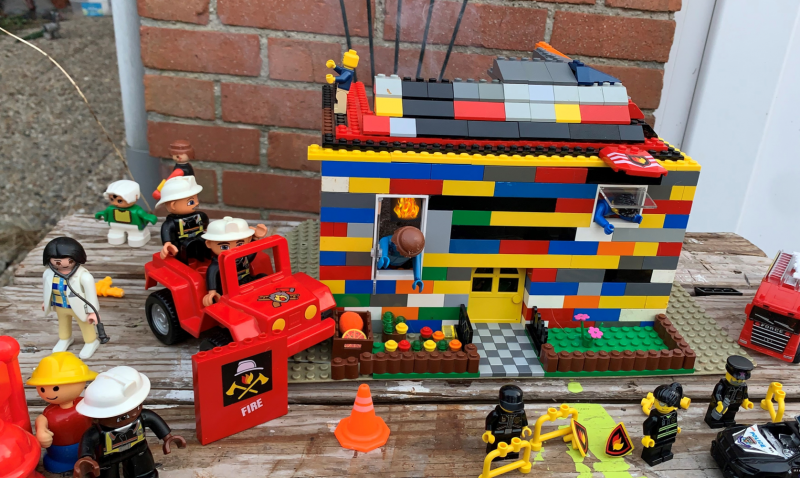We’re introducing each of our four Policy-in-Practice Fund projects with an introductory blog post. Below, Manon den Dunnen from the Dutch National Police answers a few of our burning questions to give us some insight into the project and what it hopes to achieve. We’re really excited to be working with four groups of incredible innovators and you’ll be hearing a lot more about the projects as they progress.
Your project is exploring how we share information with public bodies. What is the problem with the way we do it now?
Europe has made significant progress on protecting our privacy, including through the General Data Protection Regulation (GDPR). However, there remain several problems with the collection and use of personal data. Information about us is often collected without our consent or with disguised consent, causing citizens and other data owners to lose control over their personal data and how it is used. This contributes to profiling (discrimination, exclusion) and cybercrime. At the same time, it is laborious and complex for citizens and public institutions to obtain personal data in a transparent and responsible way.
That is why a collective of (semi-) public institutions has been working towards an independent, public trust infrastructure that allows the conditional sharing of data. The Digital Trust Infrastructure or DTI aims to safeguard our public values by unravelling the process of data sharing into small steps and empowering data subjects to take control of each step at all times.
Rather than focusing on information sharing with public bodies, our project will explore public bodies taking responsibility for creating processes that help to safeguard constitutional values in a digitised society.

What kinds of risks are there for handling personal information?
Preventing these problems requires organisations to work according to several principles, most of which can be found in the GDPR. Let’s take cybercrime as a potential threat. The risk of your data being exposed to cybercrime increases as your data is stored in more places. Organisations must therefore practice data minimisation, but there are other approaches available. For example, structures that allow citizens to give conditional access to information about them, rather than having to store the data themselves. This ‘consent arrangement’ is exactly what this project will set out to test.
This idea will be new for many people, so expert support and protection should be provided when setting up a consent arrangement for data sharing. But the potential impact is huge. Take for example someone with an oxygen cylinder at home for medical use. This is not something a citizen would be expected to declare as part of their daily life. But when there is a fire, both that citizen and the fire brigade would like that information to be shared.
That piece of data about the citizen’s use of an oxygen cylinder is the only information needed by the fire brigade. But current systems often share far more information automatically, including the person’s identity. Citizens should be able to give the fire brigade conditional and temporary access to only the information that an oxygen bottle is present, such as in emergencies like a fire.
How can public bodies do this safely and with the trust of citizens? What kind of role do you think public bodies can play in increasing trust in data-sharing in the digital economy more broadly?
A data-driven approach to social and safety issues can truly improve the quality of life, facilitate safety and innovation. But we must set an example in the way we approach this. At each moment, we must carefully consider which specific piece of information is needed by a specific person, in what specific context and moment of time, for what specific purpose and for how long.
By investing in this early on and involving citizens in a democratic and inclusive way, we can not only increase trust but also use the results to demand partners to do the same and create the new normal.
You are working on a specific case study with the Dutch Police and other partners. Can you tell us a bit more about that experiment, and how you think this model could be used in other contexts too?
During the next few months, we will create a first scalable demonstrator of the Digital Trust Infrastructure. It will be based on the use-case of sharing home-related data in the context of an incident such as a fire. The generic building blocks that we create will be fundamental to all forms of data sharing, like identification, authentication, attribution, permissions, logging etc. They will also be open-source and usable in all contexts. We have a big list of things to work on!
But that is only part of the story. Complementary to the infrastructure, an important part of the project focuses on drawing up a consent arrangement. This will allow residents to conditionally share information about their specific circumstances and characteristics with specific emergency services in a safe, trusted way. To put people in control of every small step and ensure the consent arrangement will be based on equality, we will organise the necessary expertise to understand every aspect. The consequences of our actions have to be transparent, taking into account groups with various abilities, ages and backgrounds.
We will also explore how, and to what extent, the conditions and safeguards can be implemented in a consent arrangement and embedded in the underlying trust infrastructure in a democratic and resilient way. We will also look at how a sustainable and trustworthy governance structure can be set up for such a consent arrangement. We will share all our findings on these areas.
How can people get involved and find out more?
We are currently collecting experiences from other projects on how to engage residents in an inclusive, democratic and empowered (conscious) way. All the knowledge that we are building up in this area will be shared on the website of our partner Amsterdam University of Applied Sciences (HvA). Naturally, we would value hearing about the experiences of others in this area, so please do get in touch.
